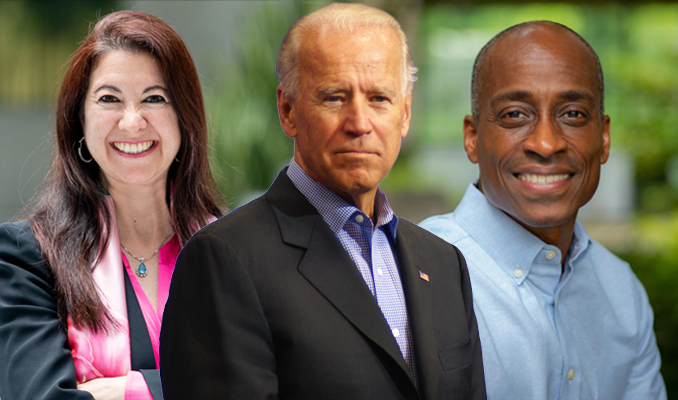On Friday, President Joe Biden nominated Adriana Kugler as the first Latina governor and Philip Jefferson as the second black vice chair to the Federal Reserve’s board.
Biden nominated Jefferson, the current Federal Reserve Governor, to become the central bank’s vice chair, making him second in command to Fed Chair Jerome Powell. Both nominees are expected to be confirmed by the Senate without issue.
The appointment of Adriana Kugler, a Colombian-American, would alleviate the persistent grievances of New Jersey Senator, who has been vocal about the historic absence of Hispanics in top leadership positions in the US central bank.
Bob Menendez, who has criticized the lack of Hispanics in US central bank leadership. Menendez stated that this nomination would give Latinos a seat at the table for the most consequential decisions on monetary policy.
Last year, Philip Jefferson was appointed as a Fed governor as part of a diverse group of three picks made by Biden, resulting in the most diverse seven-member board in the Fed’s history.

Jefferson has been nominated to replace Lael Brainard, who stepped down as Fed vice chair in February after serving for nine years to join Biden’s National Economic Council.
If appointed, Jefferson would be the second black vice chair since Roger Ferguson held the position approximately 20 years ago.
Lisa Cook, who became the first black woman to join the central bank’s leadership when she was confirmed to the Board of Governors last year at the same time as Philip Jefferson, has been re-nominated by Biden for a full 14-year term.
If she accepts the nomination, her current term which ends in January 2024, will be extended. In a statement, Biden emphasized that the nominees appreciate the importance of their roles in pursuing maximum employment, maintaining price stability, and supervising the nation’s financial institutions.
He expressed confidence that they will help to continue the strong economic recovery that the country has experienced during his administration.
Federal Reserve’s Diversity Takes a Step Forward
The Federal Reserve’s recent nominations coincide with its efforts to combat high inflation. Last week, Fed Chair Jerome Powell suggested that the Fed may be done increasing rates, citing a “meaningful change” in the Fed’s language from its March statement.
The approval of a 25-basis-point hike was announced the same day as Powell’s comments, marking the 10th consecutive increase aimed at reducing decades-high inflation.
According to figures released by the US Bureau of Labor Statistics, the Consumer Price Index (CPI) – which excludes food and energy – rose by 5.5% in April, a slight decrease from the previous month’s increase of 5.6%.
The overall CPI rose by 4.9% last month, down from the 5% rate in March. Meanwhile, core inflation, which measures consumer payments for key household goods, increased by 0.4%.
The CPI’s latest inflation figures were driven by rising prices in shelter, gasoline, and used cars, but were partially offset by decreasing rates in oil, new cars, and food.

The nominations are noteworthy as they are expected to increase the diversity of the Fed’s leadership, which could bring different perspectives and experiences to the central bank’s policymaking.
Adriana Kugler, the first Latina nominee to the Fed’s board, could help address long-standing complaints about the lack of Hispanic representation in the central bank’s leadership.
Similarly, Philip Jefferson’s nomination as the second black vice chair could help increase diversity at the highest levels of the Fed. Lisa Cook’s re-nomination to a full 14-year term on the Board of Governors could also contribute to the diversity of the board.
In terms of policy, the nominees’ impact on the Fed’s decisions will depend on their positions on issues such as inflation, interest rates, and financial regulation. If confirmed, Kugler and Jefferson will have a say in the Fed’s decisions on monetary policy, which could affect the US economy and financial markets.
Overall, the impact of the nominations will depend on the nominees’ views on policy and how they work with the other members of the Fed’s Board of Governors and the Federal Open Market Committee (FOMC) to shape the central bank’s decisions.












